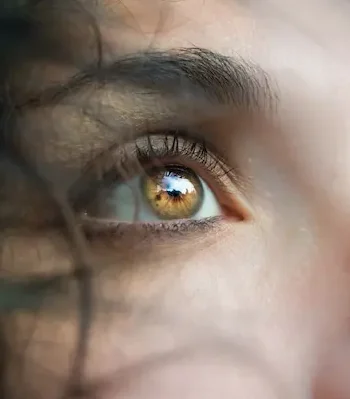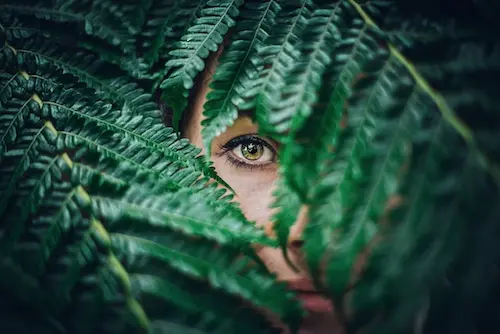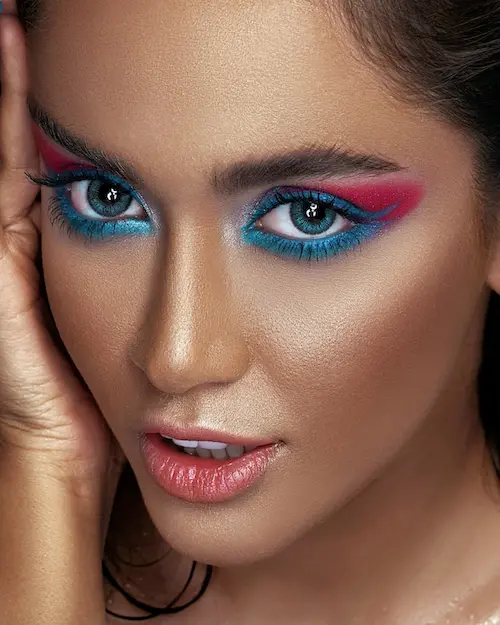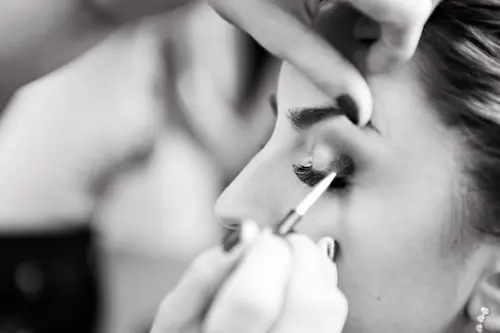The attractiveness of the most beautiful eyes in the world, according to a study by the eyes to be more beautiful with certain colors what is the color?
Science of the eyes: The attractive and the anatomy of the eye
Since the protective layer external known as the cornea to the delicate internal components such as the retina and the optic nerve, each part plays an important role in the process of the vision. The complexity of the eye becomes even more emphasized by the presence of the iris, the colored part of the eye that regulates the amount of light that enters through the pupil. In addition, the lens, located behind the iris, focus the incoming light on the retina, where the image is converted into electrical signals that are transmitted to the brain. This intricate interaction between the various components of the anatomy of the eye, an area of study captivating.
To investigate the intricacies of the anatomy of the eye shows the remarkable adaptation of this organ to their visual functions. The cornea, for example, provides protection against external elements such as time bends, or refracts, the light on the lens. This transparent structure consists of several layers, each of which contributes to its strength and clarity. Behind the iris, the ciliary muscles adjust the shape of the lens, allowing the adjustment of the focus between far and near distances. These structural modifications highlight the remarkable accuracy and effectiveness of the anatomy of the eye to allow us to observe the world with all its vivid detail.
Even if external structures of the eye are invisible to the naked eye, the internal components are equally remarkable. The retina, located at the back of the eye, contains specialized cells called photoreceptors that convert light into electrical signals. These signals are transmitted to the brain via the optic nerve, where they are interpreted as visual information. The macula, a small area in the retina that is responsible for central vision and help in tasks such as reading and recognizing faces.
The intricate network of blood vessels that nourishes the retina further reinforces the importance of the anatomy of the eye to maintain its optimal function.To understand the intricate arrangement and operation of these internal structures, allows us to appreciate the complexity of the eye and its vital role in our ability to apprehend the world around us.
The role of melanin in the color of the eyes
Explore the science of the eye that is behind the role of melanin in the color of your eyes is captivating. Melanin, the pigment produced by melanocytes, is a critical factor in the development of the tone, brown, green, blue, and other colors of the eyes of the people. It has the power to determine the lightness or darkness of the iris, as well as affect the general appearance of the eye. This intricate interaction between melanin and the shade of your eyes has intrigued scholars for many years, urging them to take numerous studies and to discover new information.
Melanin, when it is present in the iris, which causes the coloration of the eyes is unique. The more melanin is present, the darker will be the eyes. On the contrary, those who have less melanin will have colored eyes are more clear. Several elements, such as genetics, the environment, and endocrine levels, can modify the production of melanin. To understand the role of melanin in the color of the eyes not only increases the knowledge of the science that underlies the color of the eyes, but also allows to understand the complexity of the genetics and biology of a human.
Below, we'll examine the fascinating aspects of the genetics, physiology, and even the influence of the diet and the environment in the color of the eyes, reeling even more layers of the role of melanin in the color of the eyes.
The Genetics of Eye Color
The exploration of the Genetics of Eye Color is a discipline intriguing that examines the intricate mechanisms that underlie the variety of colors of the eyes between individuals. Common knowledge indicates that eye color is determined primarily by genetics, and that certain genes contribute significantly to the expression of the different colors of eyes.
Through exhaustive research and scientific studies, experts have discovered that variations in the gene OCA2 and HERC2 are closely related to the discrepancies in the color of the eyes seen in human populations. These genes influence the manufacturing and distribution of melanin, the pigment responsible for the color of the eyes. Understanding the genetic basis of the color of the eyes allows you to not only understand our exceptional qualities, but it also sheds light on the ins and outs of the broader issues of human genetics.
A key factor in the determination of the color of the eyes lies in the amount and dispersion of melanin within the iris, the part off of the eye. The gene OCA2, also known as gene of the blue color of the eyes, is a critical component of this process. Manages the production of melanin in specialized cells called melanocytes, which are responsible for the pigmentation of numerous tissues, including the iris. Variations in the gene OCA2 may cause a decrease in the production of melanin, which gives rise to colors of eyes to be more clear like the blue or the green.
Conversely, people with a greater degree of melanin show colors of eyes, darker colours, such as brown or black.This complex interaction between the gene OCA2, and the production of melanin accentuates the genetic complexity hidden from the determination of the color of the eyes.
In addition to the gene OCA2, it has also been recognized that the gene HERC2 contributes greatly to the variation of the color of the eyes. This gene is closely related to the gene OCA2 and affects its expression. Specifically, a variation in the gene HERC2 can cause changes in the production and distribution of melanin, which gives rise to different eye colors.
Surprisingly, it has been discovered that people with brown eyes have a particular variant of the gene HERC2, while blue eyes are a variant opposite. These genetic differences contribute to the wide range of eye colors observed in human populations around the world, highlighting the intricate genetic interactions that are involved in the determination of the color of the eyes.
To understand the genetics of eye color transcends mere curiosity; it has practical implications in many fields, such as forensic science and medicine. In forensic investigations, the identification of the color of the eyes can provide valuable clues in the identification of suspects or victims.
The science of the pretty eyes, the physiology of color
The ins and outs of the physiology of the color of the eyes are intriguing, as they delve into the mechanisms that underlie the diversity of hues that are observed in human eyes. The concentrations of pigment in the iris, primarily melanin, play a key role in the range of colors observed. The number and activity of melanocytes, the cells responsible for producing melanin in the iris are an integral part of the color differences of the eyes and its effect facial.
A lower concentration of melanin in the stroma, the connective tissue of the iris, which causes light scattering, giving rise to the blue aspect. By contrast, the highest concentrations of melanin to absorb more light and create the characteristic brown color.
The research has also revealed the involvement of genetics in the color of the eyes. Gene OCA2, HERC2, and SLC24A4 have been associated with the production, transport and distribution of melanin in the iris. The variations in these genes may lead to alterations in the amount and type of melanin produced, thus causing a change in the color of the eyes. A further exploration of the physiological and genetic basis of eye color continues to advance our knowledge of the complexity of the inheritance and human variation.
The eye is a complex organ, and the variations in color are the result of intricate biological processes. The understanding of the physiology of the color of eyes can offer a vision of our evolutionary past and our genetic composition. In addition, new studies on the genetic factors that influence the range of tones of the eye can provide valuable information about human diversity.
The impact of the diet on the color of the eyes.
In the science of eye color is a complex issue, involving many elements, such as genetics, environment and diet. The research suggests that certain nutrients and compounds present in foods may have the potential to improve the color of the eyes. This opens up new possibilities for those who are curious to change the pigment of your eyes formanatural.
Nutritionists and researchers dedicated to the science of the eyes have discovered that a diet rich in certain nutrients can affect the color of the eyes. Foods such as berries, spinach and carrots have a high content of antioxidants like vitamins A, C and E, which are essential for eye health and the production of melanin. Consuming regularly these nutrient-rich foods, it is possible to observe an intensification or gradual clarification of the color of the eyes.
The association between diet and the color of the eyes
In addition to antioxidants, certain foods contain compounds related with the alterations of the color of the eyes. For example, the green tea is famous for its catechins, which has been shown to stimulate the production of melanin. In the same way, the omega-3 fatty acids found in salmon and flax seeds have anti-inflammatory properties that can improve the color of the eyes. These dietary modifications provide people with a natural ability to modify the color of your eyes.
Although the science of the eyes, the effect of diet on the color of the eyes can be mild and vary from one person to another, remains an interesting option for those who are interested in improving the color of your eyes. It is important to note that alter the color of the eyes through the diet requires commitment and patience, and the results may not be spectacular. However, adopting a balanced and nutritious diet that includes foods that enhance the color of the eyes can be beneficial for eye health in general, and may lead to slight improvements in the color of the eyes over time.
The role of the environment in the color of the eyes
The influence of the environment on the color of your eyes:The environment can have a substantial impact on the tone of our eyes. Genetics largely determines the basic color of the eyes, but environmental factors may affect the expression of certain genes, giving rise to a range of eye colors.
Exposure to sunlight, for example, can trigger the production of melanin which is the pigment responsible for the color of the eyes. In addition, the levels of UV radiation in certain areas can also influence the color of the eyes. This interaction between genetics and the environment creates a kaleidoscope of eye colors in the world.
In addition, the environment during childhood can also affect the maturation of the color of the eyes. The people who live in places with greater UV radiation tend to have eye colors darker due to increased production of melanin to protect the eyes from the damage of UV rays.
On the contrary, those who reside in areas with less sun tend to have colored eyes are more clear because of the decreased production of melanin. This fascinating demonstration of the adaptability of the human body to its environment is truly remarkable.
Nutrition can also influence to a certain extent in the formation of the color of the eyes. The vitamins and antioxidants present in our diet, such as lutein and zeaxanthin, can contribute to a healthy eyes and accentuate potentially the color of the eyes. Although the power alone can not drastically alter the color of the eyes, can help maintain eye health and intensify potentially the tone for existing.
Finally, the cultural significance of the color of the eyes varies in different societies, and this can shape the perception that people have of the color of the eyes. In some cultures, certain colors of eyes are considered more attractive, which leads to the adoption of practices that conform to artificially color of the eyes. For example, people can wear contact lenses colors to temporarily change the color of your eyes, and reflect the cultural preferences. However, it is important to note that these changes are superficial and do not affect the genetic or environmental factors underlying that determine the color of the eyes.
The cultural significance
The color of the eyes has always been a defining trait in the cultures around the world, as it influences the attractiveness of a person, their character traits, and even their social position. Many companies have assigned a high value to certain tones, and the blue eyes are often considered symbols of beauty, innocence and purity. In contrast, darker shades, such as brown and black, can be perceived as mysterious or even seductive.
The importance given to the color of the eyes varies greatly from one culture to another, and some do a great emphasis on certain colors as desirable or even auspicious. To examine the cultural significance of the color of the eye provides a unique vision of how to interpret and understand the physical traits in different societies.
Throughout the story, the color of the eyes has been used to distinguish individuals or groups, and even to form social hierarchies. For example, in ancient Egypt, green eyes were considered a sign of royalty and were very much appreciated. Similarly, in some asian cultures, the clear eyes, as the blue followed by green, is associated with the beauty and often denoting a social rank highest. Meanwhile, in some african cultures, people with brown eyes dark are revered for their wisdom and intelligence.
These cultural beliefs and the connections with the color of the eyes to demonstrate the clear importance of this physical feature in the formation of perceptions and social expectations. To the extent that it advances our understanding of the genetics and the color of the eyes,it is essential to recognise and respect the cultural meaning associated to this feature seemingly ordinary.
The latest research
Recent technological advances have illuminated the curious field of the color of the eyes. Scientists have been examining diligently aspects of genetic, anatomical, and physiological pigmentation of our iris, trying to demystify the range of hues of our appearance in the eye. These discoveries are allowing a better understanding of the components that contribute to the color of the eyes, as well as the possible correlations between the color of the eyes and results in the field of health.
It is believed that genetics is the main factor determining the color of the eyes, and researchers have identified numerous genes that appear to affect the tone of our eyes. Through the study of these genetic elements, the researchers hope to unravel the complex interaction between genes and the environment that gives rise to the wide variety of eye colors observed in the populations.
In addition, in the eye science in genetics, it is known that environmental factors also contribute to the color of the eyes. Studies have revealed that external elements, such as sun exposure and diet, may affect the vibrancy and intensity of color of the eyes. For example, it is believed that a greater exposure to UV rays can darken the iris, creating a tone more pronounced. In the same way, certain nutrients in our diet, such as antioxidants and vitamins, can help to maintain and improve the color of the eyes.
As the research on the color of the eyes continues to reveal the secrets of this captivating phenomenon, scientists are discovering new knowledge that could have implications in various fields. This new understanding of the color of the eyes not only satisfy our curiosity, but also offers a new appreciation of the extraordinary wonders of the human body.
How to beautify the eyes
In the world of beauty, the eyes occupy a special place as the windows of the soul. Not only are they a means to view the world around us, but also a powerful tool of expression. So if you have large eyes and round like some captivating how to almonds, there are ways to enhance your natural beauty and make you really mesmerizing.
To understand the shape
To optimize the beauty of your eyes you must understand that each person has eyes only, and to know yours will allow you to experiment with different styles and techniques of makeup. If you determine the specific characteristics of your eye, you'll be able to adapt the application of the make-up to accentuate your eyes and make them appear more vibrant and seductive.
Identify the shape of your eyes is the first step to mastering the game of eye makeup. Almond-shaped eyes have a balanced appearance, and slightly elongated, with a crease visible on the eyelid. Other forms of eyes, like the round or hooded, require approaches of makeup specific to create the illusion of a crease defined and open the eyes. The eyes are monolithic, that do not have a crease visible, also require unique techniques to highlight your beauty. Understanding these distinctions will help you to choose the makeup products and application methods most suitable for your eyes.
Once you have identified your eyes, you can explore its unique characteristics. For example, almond-shaped eyes are symmetrical in nature and can be made with various colors and textures of the shadow. The round eyes may appear more elongated with dark shadows in the outer corners. The eyes with hood benefit from techniques such as the application of shadows, folds or halo to the eyes appear more visible. Finally, the eyes monotonous may be accented with shades of bright and shining. If you know your eyes, you'll be able to create looks that highlight your natural features and get amazing results and eye-catching.
To choose the right makeup
Select the makeup ideal is a key factor to highlight the attractiveness of your eyes. The ideal combination of eyeshadow, eyeliner and mascara you can have a great impact on the general look of your eyes. In terms of eye shadow, keep in mind the color of your eyes. If you have googly eyes, opt for shadows in matte and prevents the bright, since they can make your eyelids look heavy.
If you have blue eyes, toned as bronze and copper can highlight them. Experiment with different shades can help you discover the hues that blend with the color of your eyes and highlight your natural beauty.
When you decide on a eyeliner, reflects on the effect you want to achieve. To create a look striking and dramatic, choose a liner fluid or gel to get precise lines and crisp. For a look softer and more natural, an eye pencil can be blended right to get a smoky effect.
The color of the eyeliner also plays an important role to emphasize the color of your eyes. For example, the liner brown or bronze can make blue eyes appear brighter, while the purple or plum can enhance your green eyes hazel. Experiment with different styles and shades of eyeliner can help you find the look that's ideal for any event.
Another essential element to choose the right makeup is to select the mascara properly. The mask adds volume, length and definition to your lashes, making your eyes appear more vibrant and communicative. Think of the effect you want to achieve with the mask of eyelashes. If you want lashes more voluminous and thick, choose a mask voluminizadora.
If you prefer a longer lashes and delineated, choose a mask breaker. The mascara water resistant is a superb choice for special events, or when you need your makeup to resist the humidity or tears. Choose the mask of eyelashes can adequately highlight the beauty of your eyes and complete your eye makeup in general.
Tips for applying eye shadows
Perfecting the art of the application of eyeshadow is key to highlight the natural beauty of your eyes. To get the desired look, start by choosing the right colors that foster your eyes and the tone of your skin. The neutral tones, such as browns and taupes, are ideal for the looks everyday, while shades brighter, like the blues and purples, they can add a vibrant touch to special occasions. It creates dimension and profundidadaplicandoun lightest shade as a base and then a tone slightly darker in the crease. Be sure to blend well with the colors in order to achieve a smooth transition.
Vary the finish of the eye shadows can also bring variety to your looks. The matte tones are perfect for creating a look soft and natural, while the shadows bright and metallic can bring a touch of glitz and glamour. Play with different textures to find the perfect combination. When applying eyeshadow, use a brush fluffy blending color and avoid lines marked. Start applying the eye shadow, slightly and gradually increase the color to give it more intensity. Also, don't forget a primer for the shadow to last longer and does not wrinkle. With these tips, you'll be able to create a myriad of looks striking that highlighted the natural beauty of your eyes.
Basic aspects of the application of the eyeliner
To enhance the beauty of your eyes it is necessary to master the basics of the application of the eyeliner. To begin with, you must choose the right kind, either pencil, gel, or liquid. Each formula has its own advantages and provides various effects. Experiment with different types is the key to find the one that works for you. Preparing the eyes prior to the liner is essential to creating a flawless look. Make sure your eyelids are clean and without traces of make-up to the eyeliner adhere well and do not run during the day.
Once you have the eyeliner you've chosen, start by creating a thin line along the lash line. This will be the basis for your look. You can then choose to join the line, or create a winged effect, according to the result you want. To ensure accuracy, using strokes short and light instead of trying to draw a continuous line a single time. To help you create a straight line, you can use a guide, tape or a card.
In addition to choosing the right kind of eyeliner right, it is important to choose the correct color. Black is an option timeless that works with most eye colors and looks make-up. However, you can also experiment with shades like brown, navy blue or even metallics. Keep in mind the color of your eyes and the desired result when you select a color of eyeliner.
Once worn eyeliner, fix it to avoid smudging or fading. To do this, you can use an eye shadow to game or some translucent powder on the eye-liner. This will help secure it and to make it last longer. If you want to intensify the look,or over used a eye shadow or a liner of similar color. This will create an effect more vivid and long-lasting. With practice, you'll be able to find the style of application of the eyeliner that suits you best.
Eye care
A eye health optimal is essential for maintaining its beauty and vibrancy. To ensure that your eyes are kept in good condition, it is important to observe good hygiene practices. This includes washing your hands before touching your eyes and avoid rubbing or excessive contact with the area. There is that removing all make-up before going to bed to avoid irritation or infection. Also, wearing sunglasses to protect you from the harmful UV rays of the sun can help preserve the delicate tissues of the eyes.
Eye check-ups should also be part of your routine eye care. These reviews can detect any potential problems in their early stages, and allow a timely treatment. In addition, lead a balanced lifestyle that includes a nutritious diet, especially rich in vitamins and minerals beneficial for eye health, you can contribute even more to a function of the eye, optimal. Finally, make regular breaks and to practice eye exercises can help reduce fatigue and tiredness eye caused by long hours in front of the screen. By following these simple tips, you'll ensure that your eyes remain healthy and beautiful for many years.
Conclusion on the eye science
In conclusion, the science of the eye lies in that beautiful eyes are not just a matter of genetics, but also of knowing the shape of your eyes and to choose the makeup techniques appropriate. If you follow the tips and tricks outlined in this article, you can enhance the natural beauty of your eyes and create looks stunning. Remember to take care of your eyes with a good hygiene and protegiendolos of harmful pollutants. With the knowledge and tools appropriate, you can get the eyes you've always dreamed of. So go ahead, experiment and have fun with the eye makeup.
The eye science has provided us with a captivating journey into the intriguing world of the color of the eyes. From the exploration of the anatomy of the eye to the deepening of the role of genetics and the melanin, we have gained a deeper understanding of what makes each pair of eyes is unique. In addition, we have discovered the impact of diet, the environment and the culture in the color of the eyes, discovering the intricate interaction between nature and nurture.
At the conclusion of this illuminating exploration, we are left with a feeling of wonder at the complexity of our eyes and the beauty they provide.








0 Comments